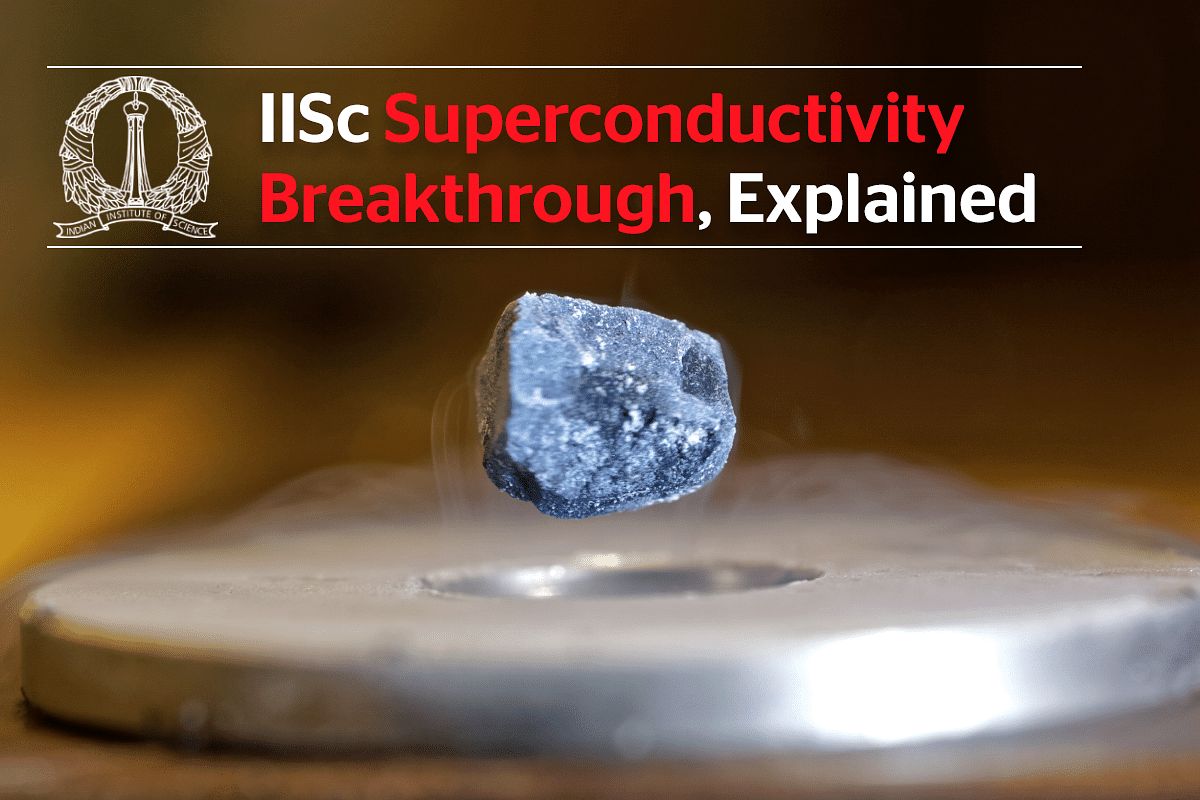Videos
Superconductivity At Room Temperature? IISc’s Breakthrough Research, Explained

What you should know about the discovery.
Transcript:
It's been over a week since IISc’s breakthrough on superconductivity has again created news.
This time the research supervisor-student duo of the Solid State and Structural Chemistry Department came out with a clarification on a paper they posted on ‘arXiv’ last year claiming that they had found superconductivity in ambient temperature and pressure.
Why is this important? Let's have a rundown.
The authors of the paper, Anshu Pandey and Dev Kumar Thappa, both research scholars at IISc, claimed that they had discovered superconducting behaviour at room temperature and pressure in a nanostructured composite material of silver and gold – formed by embedding silver nanoparticles in a gold matrix.
What is a superconductor?
Superconductors are materials that exhibit perfect conductivity to electricity and perfect diamagnetism.
Perfect conductivity here means zero resistance to electricity and thereby zero power loss. Whereas perfect diamagnetism implies strong repulsion when a magnetic field is applied.
Thus, superconductivity has, since its discovery by Dutch scientist Kammerlingh Onnes in 1911, been a holy grail in material science - it gives the possibility of generating, transmitting and utilising electrical energy without any loss.
The fact that such materials exhibits strong diamagnetism means that we could generate very strong forces that can work against gravity; for instance, you can have a bearing that is both frictionless and contactless.
These strong forces can even be utilised for fast ground transportation of trains. In fact, superconducting trains can travel at very high speeds without any contact with the ground, i.e., trains can be levitated above the ground.
You might think that life would be so easy with superconductors. No. The prospect of superconductors also comes with a lot of conditions.
Materials that exhibit this property have only done so when cooled to sufficiently low temperatures close to absolute zero (0 Kelvin or -273.15 celsius). Achieving this level of temperature is highly expensive and, at the same time, an energy consuming process.
That is why material science experts have always tried various combinations of metals and other elements to achieve superconductivity at higher temperatures.
Given that, the claim by the IISc research scholars last year then took the entire science community by surprise.
Many initially dismissed the claim, pointing out insufficiency in details and indicating flaws in the data.
However, this time they have revised their claim with more measurements and an elaborate team, standing by the claim they made earlier.
So if they are able to categorically prove their claim of having observed superconductivity at ambient temperature and pressure in a nanostructured gold-silver composite material, this will revolutionise electrical transmission and high speed transportation worldwide, and India can hold its head high for that, with maybe even a physics Nobel for the taking.
We love science. And if you do too, like, share, and subscribe. Your support will encourage us to make more and more science content.
*
*
Keep up with all our video content. Subscribe to Swarajya.
Support Swarajya's 50 Ground Reports Project & Sponsor A Story
Every general election Swarajya does a 50 ground reports project.
Aimed only at serious readers and those who appreciate the nuances of political undercurrents, the project provides a sense of India's electoral landscape. As you know, these reports are produced after considerable investment of travel, time and effort on the ground.
This time too we've kicked off the project in style and have covered over 30 constituencies already. If you're someone who appreciates such work and have enjoyed our coverage please consider sponsoring a ground report for just Rs 2999 to Rs 19,999 - it goes a long way in helping us produce more quality reportage.
You can also back this project by becoming a subscriber for as little as Rs 999 - so do click on this links and choose a plan that suits you and back us.
Click below to contribute.
Latest